Titian Peale
Titian Ramsay Peale (November 17, 1799 – March 13, 1885)[1] was an American artist, naturalist, and explorer. He was a noted scientific illustrator whose paintings and drawings of wildlife were known for their beauty and accuracy. He participated as a naturalist in several scientific surveys, in particular he accompanied Stephen Harriman Long in 1819 to explore the Rocky Mountains and later served on the United States Exploring Expedition (1838–1842).
Titian Ramsay Peale | |
|---|---|
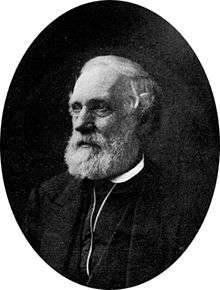 | |
| Born | November 2, 1799 |
| Died | March 13, 1885 (aged 85) |
| Nationality | American |
| Education | Charles Willson Peale Thomas Say |
| Known for | Drawing and Watercolor Natural history Entomology Photography |
Notable work | American Philosophical Society |
Biography
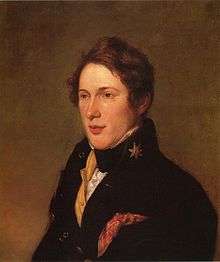
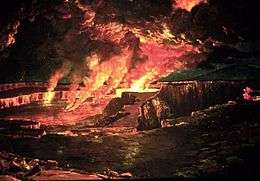
Peale was born on November 17, 1799 in Philadelphia, the youngest son of noted artist and naturalist, Charles Willson Peale. He was first exposed to the study of natural history while assisting his father on his many excursions in search of specimens for the Peale Museum. The family moved to Germantown, Pennsylvania, outside of Philadelphia, where he began collecting and drawing butterflies and other insects. Although some of his butterfly and moth illustrations were ultimately published, the majority remained unpublished until recently.[2] Like his older brothers Raphaelle, Rembrandt, and Rubens Peale, Titian helped his father in the preservation of the museum's specimens for display, which included contributions from George Washington, Thomas Jefferson, and the Lewis and Clark Expedition.
His drawings were published in Thomas Say's American Entomology as early as 1816, and he was soon after elected to the Academy of Natural Sciences.
Peale took part in the 1817 expedition of the Academy of Natural Sciences to Florida and Georgia, together with Thomas Say, George Ord and William Maclure. He was assistant to Say on the expedition to the Rocky Mountains led by Stephen Harriman Long in 1819. The collection submitted to the Academy of Natural Sciences in Philadelphia from this expedition included 122 drawings by Peale. He acquired a wild turkey for the museum's collections.
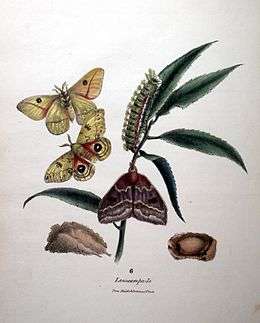
In the winter of 1824-25, Peale traveled to South Carolina and Florida to collect bird specimens for Charles Lucien Bonaparte's forthcoming quasi-continuation of Wilson's American Ornithology (1825–1833). In Florida, he boarded for a short time at the farm of Bonaparte's cousin, Achille Murat, and returned to Philadelphia in April 1825.[3] Peale also provided illustrations for Say's American Entomology (1824–1828).
In 1831, Peale published a pamphlet known as Circular of the Philadelphia Museum: Containing Direction for the Preservation and Preparation of Objects of Natural History. The Peale museum continued to gain a worldwide reputation. He developed an effective method for storing butterflies in sealed cases with glass fronts and backs. As a result, parts of his collection have been preserved until the present day. His meticulous collection of over 100 separate butterfly species was often praised for the brilliance and vibrancy of the insects' colors.
In 1838, two years after Charles Darwin had returned from his voyage on the Beagle, Peale took leave from his work at the museum to sail aboard the Peacock as chief naturalist for the United States Exploring Expedition, 1838-1842 led by Lt. Charles Wilkes.[4] As chief naturalist, he collected and preserved various specimens of natural history, many of which he packed and shipped back to the museum. Peale was unable to complete his post-expedition report, Mammalia and Ornithology (1848), thus, John Cassin was hired to produce a corrected volume, which was published in 1858. During the expedition, Wilkes named Peale Passage after Titian Peale.[5][6]
On May 1, 1843, financial pressures forced Peale to sell the bankrupt museum at a sheriff's sale to Isaac Brown Parker. Peale went on to work for the U.S. Patent Office and to become a pioneer American photographer.
He died on March 13, 1885 in Philadelphia and was interred at Laurel Hill Cemetery.[7]
Public collections and legacy
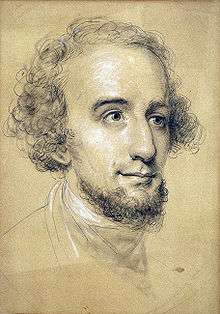
- Amon Carter Museum, Fort Worth, Texas
- Detroit Institute of Arts, Michigan
- Honolulu Museum of Art, Hawaii
- Joslyn Art Museum, Omaha, Nebraska
- Museum of Nebraska Art, University of Nebraska
- National Museum of American History, Photographic History Collection
- National Portrait Gallery, Washington, D.C.
- National Agricultural Library, Beltsville, MD, holds Peale's original manuscript, Drawings of American Insects; Showing Them in Their Several States, Together With Such Minute Insects as Require Investigation by Microscope.[8]
- Pennsylvania Academy of the Fine Arts, Philadelphia
- American Philosophical Society, Philadelphia
- Reading Public Museum, Reading, Pennsylvania
- Westmoreland Museum of American Art, Greensburg, Pennsylvania
- Yale University Art Gallery, New Haven, Connecticut, holds five of Peale's sketchbooks from the Stephen H. Long Expedition
- Academy of Natural Sciences, Philadelphia, holds Peale's butterfly and moth collections
- Carnegie Museum of Natural History, Pittsburgh, holds additional specimens collected by Peale
- American Museum of Natural History, New York City, holds Titian Ramsey Peale's unpublished manuscript of The Butterflies of North America
- Peale designed the reverse of the Gobrecht dollar minted from 1836 to 1839 and recycled for obverse of the Flying Eagle cent of 1856–1858.
- In 1923, Peale Island, one of the three islands surrounding the lagoon at Wake Atoll was named for Peale by Alexander Wetmore, lead scientist of the Tanager Expedition.
- In 1873 Robert Ridgway named the biggest subspecies of the peregrine falcons, the Peale's falcon, after him.
Notes
- Sterling (1997)
- Calhoun (2016)
- Stroud, Patricia Tyson (2000). The Emperor of Nature: Charles-Lucien Bonaparte and His World. Philadelphia, Pennsylvania: University of Pennsylvania Press. ISBN 978-0812235463.
- Adler, A. (May 1, 2011). "From the Pacific to the Patent Office: The US Exploring Expedition and the origins of America's first national museum". Journal of the History of Collections. 23 (1): 49–74. doi:10.1093/jhc/fhq002. ISSN 0954-6650.
- "Florida Naturalists – Titian Ramsay Peale – Introduction". www.floridamuseum.ufl.edu. Retrieved June 26, 2019.
- Phillips, James W. (1971). Washington State Place Names. University of Washington Press. ISBN 0-295-95158-3.
- "Titian Ramsey Peale". www.findagrave.com. Retrieved July 10, 2020.
- Library, National Agricultural. "National Agricultural Library – Home Page". www.nal.usda.gov. Retrieved June 26, 2019.
References
- Calhoun, J. V., & D. M. Wright (2016). "Remarks on the recent publication of Titian R. Peale's "lost manuscript," including new information about Peale's Lepidoptera illustrations". Journal of Research on the Lepidoptera. 49: 21–51.
- Poesch, Jessie Peale (1961). Titian Ramsay Peale And His Journals of The Wilkes Expedition, 1799–1885. American Philosophical Society. p. 226. ISBN 9781258056551.
- Sellers, Charles Coleman (1980). Mr. Peale's Museum, Charles Willson Peale and the First Popular Museum of Natural Science and Art. W. W. Norton & Company. pp. 370. ISBN 9780393057003.
- Sterling, Keir B., ed. (1997). "Peale, Titian Ramsay". Biographical Dictionary of American and Canadian Naturalists and Environmentalists. Greenwood Press.
- "Titian Ramsay Peale Sketches". American Philosophical Society.
External links
| Wikimedia Commons has media related to Titian Peale. |
- The Historic Titian Peale Butterfly and Moth Collection at the Academy of Natural Sciences
- Collection of Titian Ramsay Peale sketches at the American Philosophical Society Library.
- Scientist of the Day-Titian Ramsay Peale at Linda Hall Library